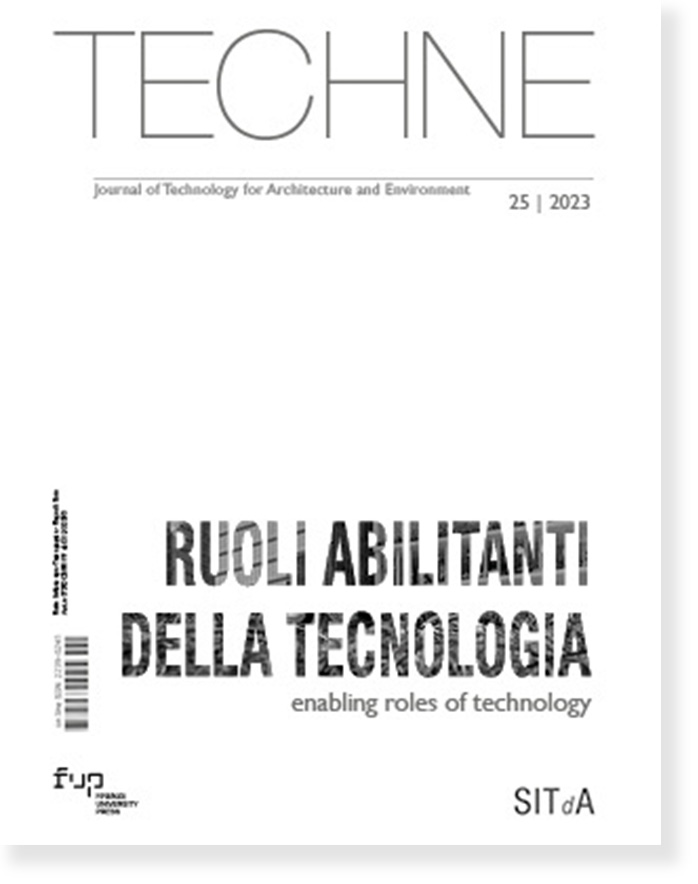Published 2023-05-30
Keywords
- façade,
- circular economy,
- IoT,
- circular business model,
- product innovation
How to Cite
Copyright (c) 2023 Matteo Giovanardi

This work is licensed under a Creative Commons Attribution 4.0 International License.
Abstract
In the façade sector, the ecological and circular transition requires the adoption of new business models that exploit the value of the material as much as possible. In this context, the Internet of Things (IoT) is identified as a potential innovation driver for the widespread use of circular approaches. The aim of the paper is to clarify the role of IoT in enabling five circular business models in the façade sector. The potential benefits of an IoT-based façade system are highlighted through a matrix underscoring the relationship between information produced and key actions to achieve the innovative business models. The research discussion and findings open the debate on the perspective of digitally integrated building components.
Downloads
References
ARUP and Freiner Reifer (2018) “Design innovation for the Circular Economy”. Available at:https://www.arup.com/perspectives/publications/research/section/facade-design-for-the-circular-economy (Accessed on 31/08/2022)
Atzori, L., Iera, A., Morabito, G., (2016), “Understanding the Internet of Things: definition, potentials, and societal role of a fast evolving paradigm”, Ad Hoc Networks, Vol. 56, pp. 122–140. https://doi.org/10.1016/j.adhoc.2016.12.004
Azcarate-Aguerre, J. F., Klein, T., Konstantinou, T. and Veerman, M. (2022), “Facades-as-a-Service: The Role of Technology in the Circular Servitisation of the Building Envelope”, Applied Sciences, 12(3), 1267. https://doi.org/10.3390/app12031267.
Bocken, N. M. P., Schuit, C. S. C. and Kraaijenhagen, C. (2018), “Experimenting with a circular business model: Lessons from eight cases”, Environmental Innovation and Societal Transitions, Vol. 28. https://doi.org/10.1016/j.eist.2018.02.001.
Bressanelli, G., Adrogegari, F., Perona, M. and Saccani, N. (2018), “Exploring how usage-focused business models enable circular economy through digital technologies”, Sustainability, 10(3). https://doi.org/10.3390/su10030639.
Chen, K. Xu, G., Xue, F., Zhong, R.Y., Liu, D., and Lu, W. (2018), “A Physical Internet-enabled Building Information Modelling System for prefabricated construction”, International Journal of Computer Integrated Manufacturing, Vol. 31, pp. 349-361. https://doi.org/10.1080/0951192X.2017.1379095
European Commission (2020), “A new Circular Economy Action Plan for a cleaner and more competitive Europe”. Available at: https://eur-lex.europa.eu/legal-content/EN/TXT/?uri=COM%3A2020%3A98%3AFIN (Accessed on 31/08/2022)
Ghisellini, P., Ripa, M. and Ulgiati, S. (2018), “Exploring environmental and economic costs and benefits of a circular economy approach to the construction and demolition sector. A literature review”, Journal of Cleaner Production, Vol. 178, pp. 618-643. https://doi.org/10.1016/j.jclepro.2017.11.207
Giorgi, S., Lavagna, M., Wang, K., Osmani, M., Liu, G., and Campioli, A. (2022), “Drivers and barriers towards circular economy in the building sector: Stakeholder interviews and analysis of five european countries policies and practices”, Journal of Cleaner Production, Vol. 336, 130395. https://doi.org/10.1016/j.jclepro.2022.130395.
GXN Innovation (2018), Circle House. Denmark’s first circular housing project. Available at: https://gxn.3xn.com/project/circle-house (Accessed on 31/08/2022)
Ingemarsdotter, E., Jamsin, E. and Balkenende, R. (2020), “Opportunities and challenges in IoT-enabled circular business model implementation – A case study”, Resources, Conservation and Recycling, Vol. 162, 105047. https://doi.org/10.1016/j.resconrec.2020.105047.
Kragh, M. K. and Jakica, N. (2022) “Circular economy in facades”, in Gasparri et al., Rethinking Building Skins, pp. 519–539. https://doi.org/10.1016/b978-0-12-822477-9.00016-4.
Lacy, P. and Rutqvist, J. (2015), Waste to Wealth: The Circular Economy Advantage, Springer. ISBN- 978-1-137-53070-7
Langley, D. J. (2022), “Digital Product-Service Systems: The Role of Data in the Transition to Servitization Business Models”, Sustainability, 14(3). https://doi.org/10.3390/su14031303.
Pollo, R., Giovanardi, M., and Trane, M. (2021), “Smart Construction Objects.Tools for reprogramming the city”, Agathòn, Vol. 10, pp. 84-91. https://doi.org/10.19229/2464-9309/1082021
Rejeb, A., Suhaiza, Z., Rejeb, K., Seuring, S., and Treiblmaier, H. (2022), “The Internet of Things and the circular economy: A systematic literature review and research agenda”, Journal of Cleaner Production, Vol. 350, 131439. https://doi.org 10.1016/j.jclepro.2022.131439.
Santana, S. and Ribeiro, A. (2022), “Traceability models and traceability systems to accelerate the transition to a Circular Economy: a systematic review”, Sustainability. https://doi.org/10.3390/su14095469.
Tukker (2004), “Eight types of product-service system: Eight ways to sustainability? Experiences from suspronet”, Business Strategy and the Environment, 13, pp. 246-260
UNICMI (2021) “Rapporto sul mercato italiano dell’involucro edilizio 2021”. Available at: http://www.unicmi.it/in_evidenza/in_evidenza/rapporto-unicmi-2021-%11-aggiornamento.html (Accessed on 31/08/2022)






